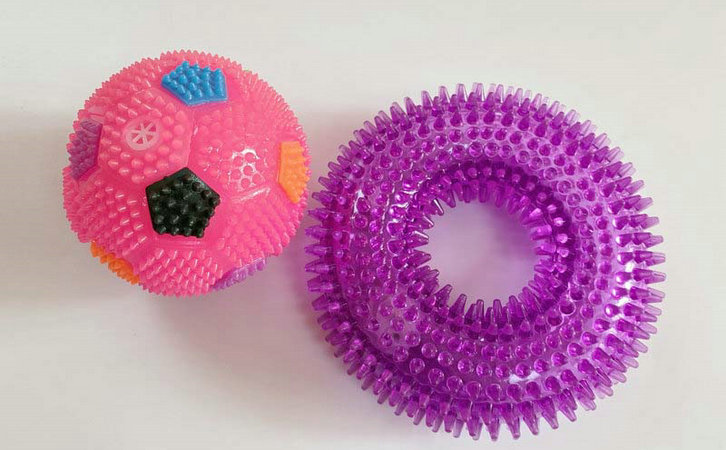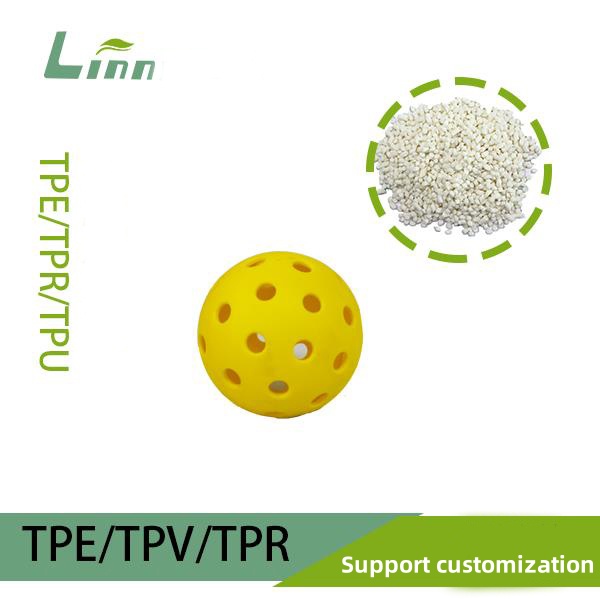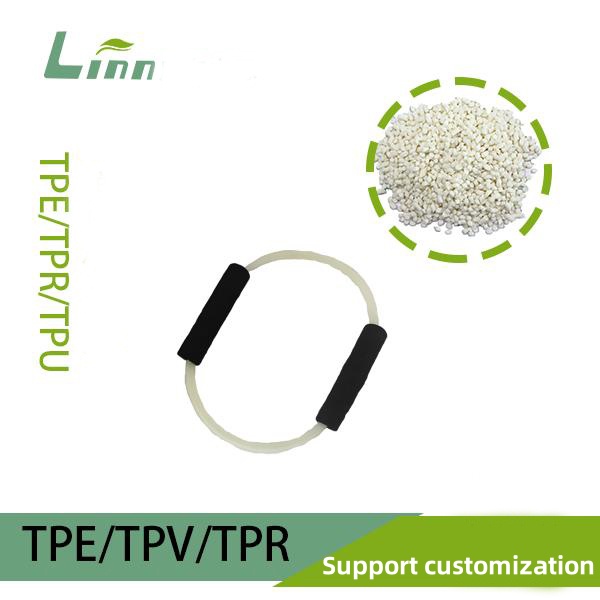As someone who has spent years working in the field of TPE (Thermoplastic Elastomer) materials, I know why TPE soft rubber is a favorite in industries like toys, sealing components, and medical devices. Its flexibility, durability, and eco-friendliness make it stand out. However, one issue that often frustrates users is bubbles. These tiny air pockets can ruin a product’s appearance and even compromise its performance or lifespan. Drawing from my hands-on experience, I’m here to break down why bubbles form in TPE soft rubber, how to fix them, and how to prevent them in the first place.

Why Do Bubbles Appear in TPE Soft Rubber?
To solve the bubble problem, we first need to pinpoint its cause. Over the years, I’ve handled countless TPE products and identified several common reasons for bubbles:
- Moisture or Volatile Substances in Raw Materials
TPE raw materials can absorb moisture during storage or transport, or they may contain volatile compounds. When heated during processing, this moisture or these compounds turn into gas, creating bubbles. - Improper Processing Temperatures
TPE soft rubber requires precise temperature control. If the temperature is too high, the material may break down and release gases. If it’s too low, poor flow can trap air inside. - Mold Design Issues
Poor mold venting or flawed design can prevent gases from escaping, leaving them trapped in the product as bubbles. - Suboptimal Injection Molding or Extrusion Parameters
Issues like overly fast injection speeds, insufficient pressure, or uneven screw mixing can introduce air or gas into the material. - Environmental Factors
High humidity in the production environment or dirty equipment can introduce moisture or contaminants, increasing the risk of bubbles.
Understanding these causes sets the stage for effective solutions.
How to Handle Bubbles in TPE Soft Rubber?
Through years of troubleshooting and collaboration with industry peers, I’ve developed a toolkit of proven methods to tackle bubbles in TPE soft rubber. Here are the most effective approaches for different scenarios.

1. Raw Material Pre-Treatment
Drying raw materials is the first line of defense against bubbles. In my work at factories, I’ve found that moisture in TPE pellets—especially in hygroscopic grades—is a major culprit.
- Steps:
- Use a dehumidifying dryer to dry TPE pellets at 80-100°C (176-212°F) for 2-4 hours (check the material’s technical data sheet for specifics).
- Store dried pellets in a sealed container to prevent reabsorption of moisture.
- Inspect raw material packaging for damage and prioritize freshly opened bags.
- Tips:
- Avoid over-drying, as it can degrade material properties.
- Ensure the dryer is functioning properly to maintain consistent temperatures.
I once helped a client eliminate bubbles in TPE sealing strips by optimizing the drying process, reducing bubble formation by over 80%—a quick and impactful fix.
2. Optimize Processing Temperatures
Precise temperature control is critical for minimizing bubbles. During injection molding trials, I’ve seen how even small temperature deviations can lead to issues.
- Steps:
- Follow the temperature range recommended by the TPE supplier (typically 160-220°C / 320-428°F, depending on the grade).
- Set temperatures in stages: lower for the feed zone, higher for the melting and die zones to ensure proper melting without overheating.
- Use an infrared thermometer to verify actual temperatures match the settings.
- Tips:
- If bubbles appear on the surface, try lowering the die temperature. If they’re internal, increase the melting zone temperature slightly.
- Keep a log of adjustments to pinpoint the optimal settings.
3. Improve Mold Design
Enhancing mold venting is a hardware solution to bubble problems. I once worked with a TPE toy manufacturer whose molds had inadequate vents, trapping gases inside.
- Steps:
- Inspect the mold for sufficient vent slots and add more if needed (typically 0.02-0.05mm wide).
- Ensure the mold surface is smooth to reduce gas adhesion.
- For complex parts, consider a vacuum-assisted venting system.
- Tips:
- Oversized vents can cause flash, so design carefully.
- Clean molds regularly to prevent blockages from oil or debris.
4. Adjust Injection Molding or Extrusion Parameters
Fine-tuning process parameters can dramatically reduce bubbles. When producing TPE hoses, I eliminated most bubbles by tweaking injection speed and holding pressure.
- Steps:
- Slow down the injection speed to avoid trapping air from high shear.
- Increase holding pressure and time (by about 10-20% above standard) to allow gases to escape.
- Set screw speed to a moderate level (typically 50-100 rpm) for uniform mixing.
- Tips:
- If bubbles appear at the edges, extend cooling time.
- Track the results of each tweak to refine the process.
5. Control the Production Environment
Maintaining a dry, clean workspace is essential for bubble prevention. During factory inspections, I’ve noticed that high-humidity workshops often correlate with bubble issues.
- Steps:
- Keep workshop humidity below 50%, using dehumidifiers if necessary.
- Regularly clean injection machines and molds to remove dust or oil.
- Store raw materials and finished products in dry, ventilated areas.
- Tips:
- Check equipment seals to block out external moisture.
- Replace air filters periodically to ensure clean air in the workspace.
6. Switch to High-Quality Materials (Last Resort)
If bubbles persist despite other efforts, the material itself may be the issue. Switching to premium TPE materials can resolve the problem for good. Our Linn brand, for example, uses rigorously tested raw materials that rarely cause bubbles.

How to Prevent Bubbles in TPE Soft Rubber?
Prevention beats fixing problems after they arise. Here are some practical tips I’ve gathered from years in the field:
- Choose High-Quality Raw Materials
Opt for reputable brands like Linn, where all TPE materials meet global standards, such as RoHS. Steer clear of unverified or recycled materials. - Maintain Strict Process Control
Before production, consult the supplier’s processing guidelines. Keep temperature, pressure, and speed within recommended ranges. - Perform Regular Equipment Maintenance
Routinely inspect and clean injection machines and molds to avoid issues from wear or contamination. - Train Operators
Ensure workers understand TPE’s unique properties and follow proper procedures. Small mistakes can lead to big problems. - Implement Quality Checks
Test samples from each batch to catch bubbles early. I’ve used microscope inspections in factories to quickly identify bubble types and their causes.
Comparison Table: TPE Soft Rubber Bubble Solutions
To help you choose the best method, here’s a clear comparison table:
| Method | Best For | Pros | Cons | Time Required | Cost |
|---|---|---|---|---|---|
| Raw Material Pre-Treatment | Moisture-related bubbles | Simple, preventive | Requires drying equipment | 2-4 hours | Medium |
| Optimize Temperatures | Process-related bubbles | Targeted, effective | Needs trial and error | Hours to 1 day | Low |
| Improve Mold Design | Poor mold venting | Long-term fix, great for scale | High cost, long lead time | Days to weeks | High |
| Adjust Process Parameters | Injection/extrusion bubbles | Flexible, fast results | Requires skilled technicians | Hours | Low |
| Control Environment | Environment-related bubbles | Comprehensive, improves quality | Ongoing investment | Ongoing | Medium |
| Switch to Quality Materials | Poor material quality | Solves root cause | Higher cost | Immediate | High |
Common Questions About Bubbles in TPE Soft Rubber
To wrap up, here are answers to some questions I often hear:
Q1: Do bubbles in TPE soft rubber affect product quality?
A: Yes, bubbles can weaken strength, compromise seals, and hurt aesthetics. In medical or food-grade applications, they may also pose safety risks. Linn’s TPE products are designed to minimize bubbles for consistent performance.
Q2: Why do new TPE products have more bubbles?
A: New items often have bubbles due to moisture in raw materials, improper processing, or mold issues. Drying materials thoroughly and optimizing parameters can help.
Q3: Can I pop bubbles with a needle?
A: I don’t recommend it. Piercing can damage the product’s structure and performance. Focus on fixing the issue during production instead.
Q4: Why do bubbles only appear in certain areas?
A: This usually points to poor mold venting or uneven material flow. Check vents in the affected area or adjust injection speed and pressure.
Q5: How can I tell if a TPE material is prone to bubbles?
A: Review the material’s technical data sheet for details on moisture absorption and processing ranges. Choosing a trusted brand like Linn reduces bubble risks significantly.

Final Thoughts
Bubbles in TPE soft rubber can be a hassle, but they’re not insurmountable. Whether you’re drying materials, tweaking temperatures, or upgrading molds, there’s a solution for every case. As someone who’s spent years in this industry, I believe a great product shouldn’t come with bubble headaches. At Linn, we prioritize quality at every step to deliver TPE items that are flawless and dependable.
If you’re struggling with bubbles in TPE soft rubber, give these methods a try—I’m confident they’ll help. Got more questions or a specific issue? Drop me a line, and I’ll do my best to guide you!





